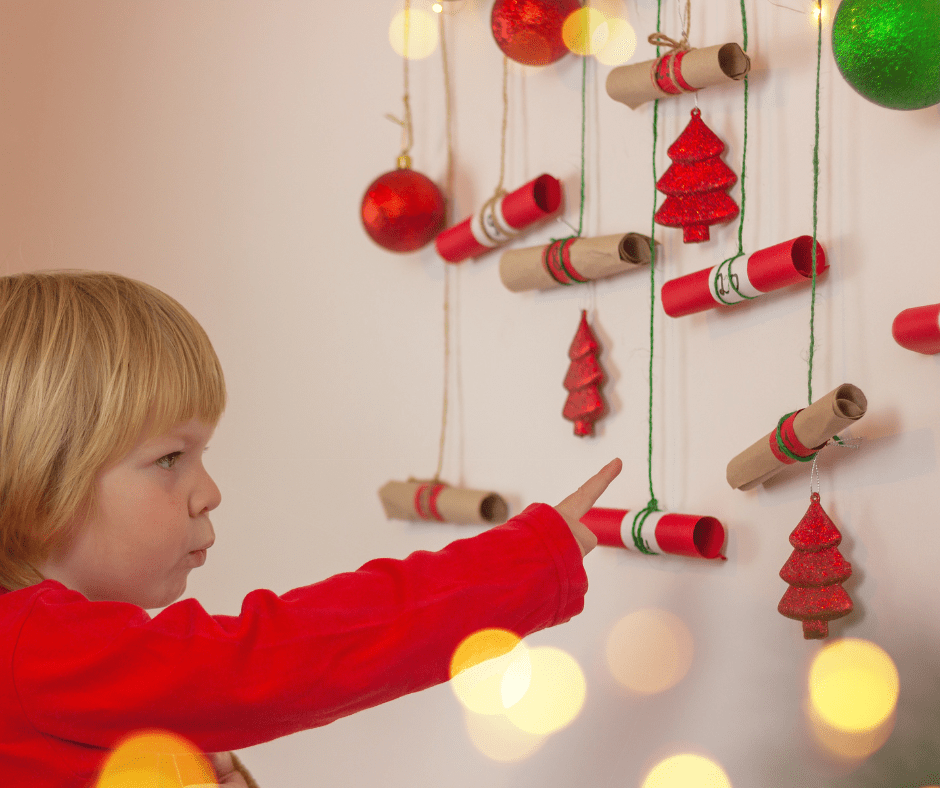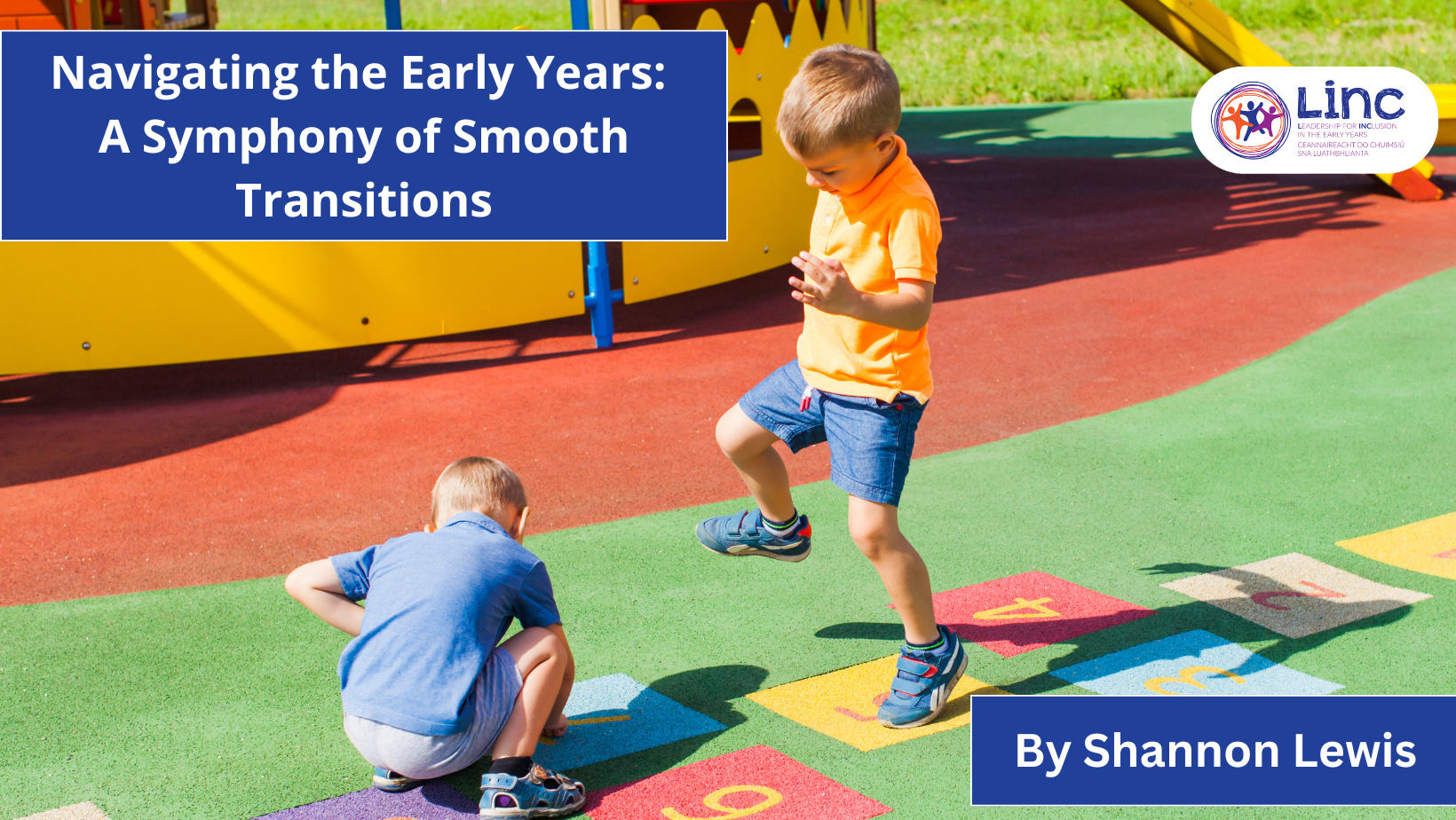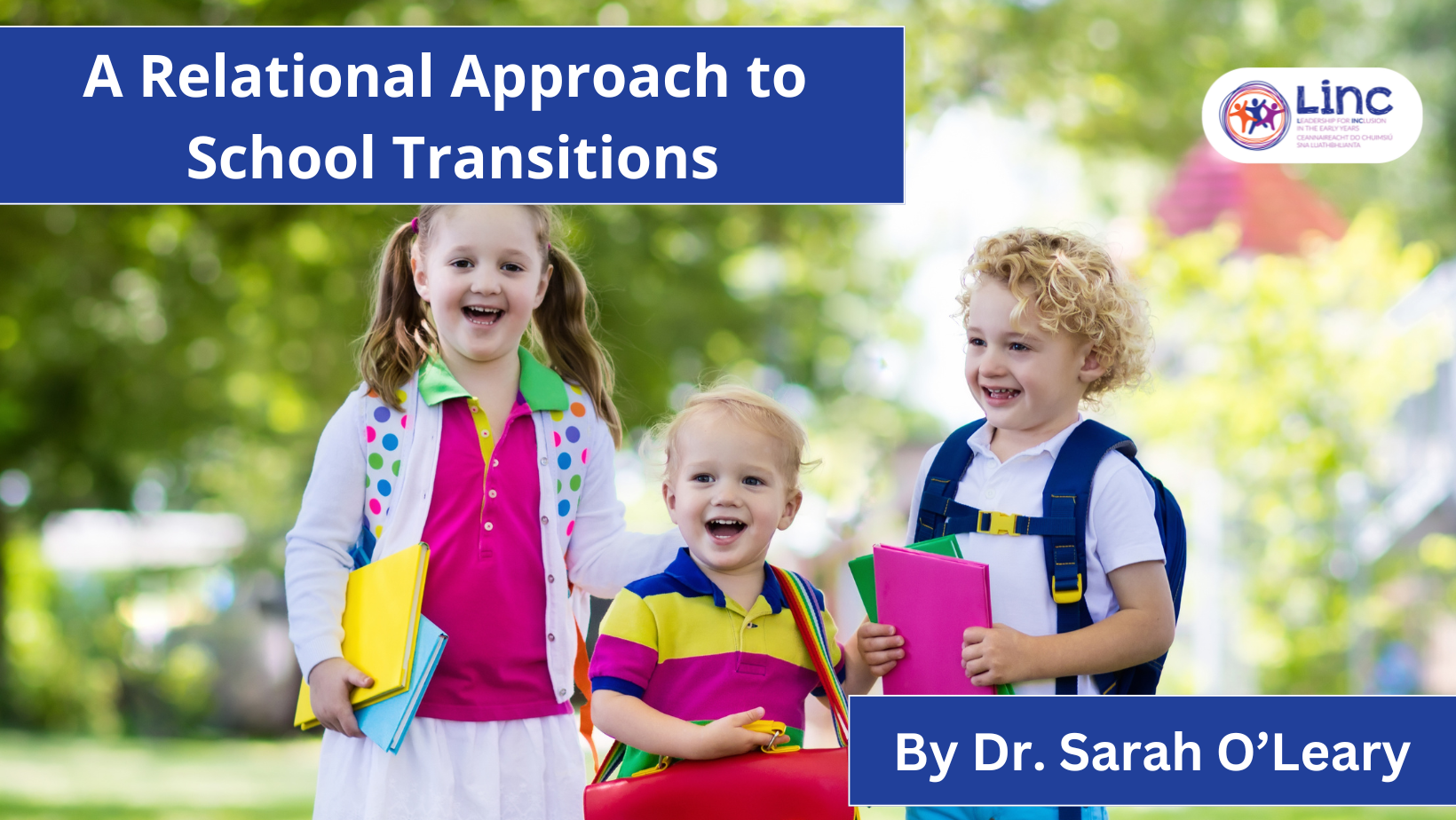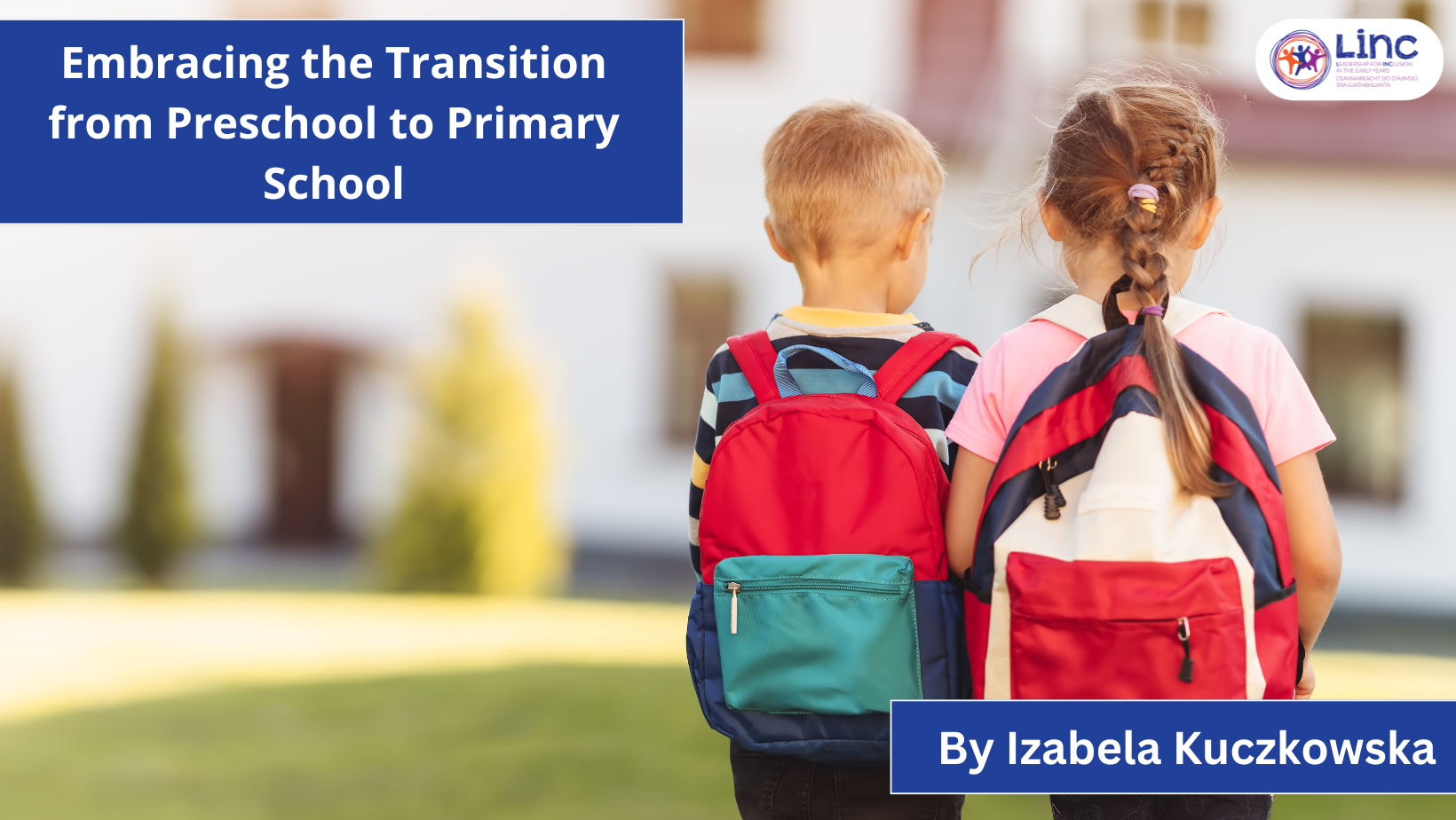Deck the Walls: Inclusive Christmas Displays that Celebrate Every Child
In this edition of the LINC Blog, former LINC Tutor Paula Harte explores how Christmas displays can bring warmth, creativity, and connection to Early Learning and Care (ELC) and School-Aged Childcare (SAC) settings. She highlights the important role visual displays play in celebrating children’s learning, supporting their confidence, and fostering a strong sense of belonging. Paula also shares practical ideas for ensuring festive activities remain inclusive for all children, including those who may find this time of year overwhelming.

Displays play an important role in creating warm, engaging, and inspiring Early Learning and Care (ELC) and School Aged Childcare (SAC) environments. They do far more than decorate walls; they reflect children’s learning, creativity, and sense of belonging. As the festive season approaches, Christmas displays offer a wonderful opportunity to celebrate togetherness and joy, while also supporting inclusion for all children. In this edition of the LINC blog, former LINC Tutor, Paula Harte, explores how displays can be both meaningful and inclusive, helping every child to feel valued and involved in the magic of Christmas.
The Power of Visual Displays
Imagine walking into an ELC or SAC setting with plain white walls. Corridors, playrooms, dining areas, and sensory or self-care spaces would feel dull and uninviting, not the kind of environment that sparks imagination, curiosity, or a sense of belonging. In contrast, vibrant and engaging displays bring these spaces to life and create an atmosphere where children feel welcome, inspired, and valued.
Displays often act as conversation starters for young children. They prompt discussions about what each child has created and allow them to take pride in recognising their own work or that of their friends. Displays also support learning by reinforcing themes from weekly topics or planned activities and by presenting information visually, which can often be easier for young children to understand than written words.
When children help design and create displays, they are not only developing their creativity but also collaborating with peers and educators. This shared process builds decision-making skills, encourages teamwork, and strengthens their sense of identity and belonging within the learning environment.


Celebrating Learning and Inclusion
Displays celebrate children’s learning journeys. They provide visible reminders of progress, creativity, and participation. They also communicate important messages to staff, families, and visitors about what the children are learning, experiencing, and enjoying.
As Christmas approaches, displays take on even greater significance. They help introduce festive themes, highlight acts of kindness and giving, and bring a sense of joy and excitement to ELC and SAC settings. Decorating slowly and thoughtfully over days and weeks, allowing children to engage at a pace that suits them, ensures the process remains inclusive and supportive of everyone’s needs.
Making Christmas Inclusive for All
While Christmas is full of wonder for many, it can also be a source of stress or anxiety for some children, particularly those who are neurodivergent. Sensory sensitivities, changes in routine, and overwhelming stimuli can make this time of year challenging.
Some children may find it difficult to engage in display-making activities because of the textures or unpredictability of certain materials. Others may become anxious about changes to their usual routine or find the sensory overload of lights and decorations overwhelming.
Planning is key to supporting all children. Maintaining familiar routines and structure helps them feel secure. Informing children in advance about upcoming activities prepares them for change. Starting small, such as by creating an Advent calendar to count down the days, allows children to ease into the festive season gradually.


Inclusive Tree Decorating
Decorating a Christmas tree is a joyful tradition in many ELC and SAC settings. The bright colours, lights, and new materials can be exciting, but they may also pose challenges for some neurodivergent children. Fine-motor tasks like hanging ornaments can be difficult, and unexpected sensory elements or changes in the environment may cause anxiety.
A more inclusive approach is to offer decorating choices that match each child’s interests and comfort levels. Providing ornaments in open baskets sorted by colour or texture helps children know what to expect. Visual supports, such as photos showing where decorations can go, can further reduce uncertainty. Allowing children to join in at their own pace or offering alternative roles like choosing colours, decorating lower branches, or helping from a distance supports autonomy. This ensures every child can enjoy the festive experience in a way that feels safe and positive.
A Joyful and Inclusive Celebration
Every child is unique, and Christmas celebrations in ELC and SAC settings should reflect that. Whether through child-led displays, thoughtful gifts, or acts of kindness, what matters most is creating a joyful and inclusive atmosphere where all children feel part of the festive spirit.
By focusing on inclusion and celebrating every child’s individuality, ELC and SAC settings can make Christmas a time of wonder, belonging, and shared happiness for all.

References
Children, Adolescents and Young People (CAYP) Psychology (2025) ‘Christmas Can Be Difficult for Children and Families with Neurodivergence’, Specialist assessments and psychological support for Children, Adolescents and Young People, available: https://www.cayp-psychology.com/christmas-can-be-difficult-for-children-and-families-with-neurodivergence/ [accessed 3 July 2025].
McCarthy, E. and Moloney, M. (2018) Leadership for Effective Inclusion in Early Childhood Education: Exploring Key Themes and Strategies, Oxon: Routledge.
Murphy, K. (2023) A Guide to Neurodiversity in the Early Years, London: Ann Freud Centre.
National Council for Curriculum and Assessment (NCCA) (2024) Aistear: The Early Childhood Curriculum Framework, Dublin: NCCA.
Sargent, M. (2011) The Project Approach in Early Years Provision: A Practical Guide to Promoting Children’s Creativity and Critical Thinking through Project Work, London: Practical Pre-School Books.
Warren, C. (2025) Neurodiversity in the Early Years: Practical Proven Strategies to Enable Neurodivergent Children to Thrive, Oxon: Routledge.
Bibliography
Berger, K.S. (2004) The Developing Person Through the Lifespan, 6th Ed. New York: Worth Publishers.
Bruce, T. and Meggitt, C. (1999) Childcare and Education, 2nd Ed. London: Hodder & Stoughton.
Child, D. (2001) Psychology and the Teacher, 6th Ed. Great Britain: Bookcraft Ltd.
Curtis, A. (1998) A Curriculum for the Pre-School Child, 2nd Ed. London: Routledge Falmer.
Drake, J. (2002) Planning Children’s Play and Learning in the Foundation Stage, 2nd Ed. Great Britain: David Fulton Publishers.
Hayes, N. (1994) Foundations in Psychology, London: Routledge.
Liebeck, P. (1990) How Children Learn Mathematics, Oxford: Penguin.
Practical Pre-School, Issue 44. Oxford: Step Forward Publishing.
Tassoni, P. et al. (2002) Diploma Childcare and Education, Oxford: Heinemann Educational Publishers.
Whitebread, D. (2000) The Psychology of Teaching and Learning in the Primary School, London: Routledge Falmer.

Paula Harte
Former LINC Tutor
Paula Harte previously served as a Tutor on the Leadership for Inclusion in the Early Years (LINC) Programme, where she contributed from its inception in 2016. She has over 25 years’ experience working in the Early Learning and Care (ELC) sector and holds a BSc (Hons) in Early Childhood Care, Health and Education, as well as a Master’s in Early Childhood Education. Paula has contributed to both the LINC and LINC+ Continuing Professional Development (CPD) Programmes and has published in the area of inclusive practice. She is deeply committed to empowering early childhood teachers to promote inclusiveness within caring, welcoming, and child-centred ELC settings.
You may also like:

Navigating the Early Years: A Symphony of Smooth Transitions
Navigating the Early Years: A Symphony of Smooth Transitions In this edition of the LINC Blog, LINC Graduate Shannon Lewis discusses the the many transitions that children encounter in the early years setting, and how we should "Envision this adventure as a...

A Relational Approach to School Transitions
A Relational Approach to School Transitions In this edition of the LINC Blog, Assistant LINC Tutor & Researcher/Lecturer in Inclusion Education, Dr. Sarah O'Leary explores the critical role of relational pedagogy in easing children's transition to primary...

Embracing the Transition from Preschool to Primary School
Embracing the Transition from Preschool to Primary School In this edition of the LINC blog, Izabela Kuczkowska, a LINC Graduate, delves into the poignant journey of children transitioning from preschool to primary school. Through her narrative, she unveils the...
